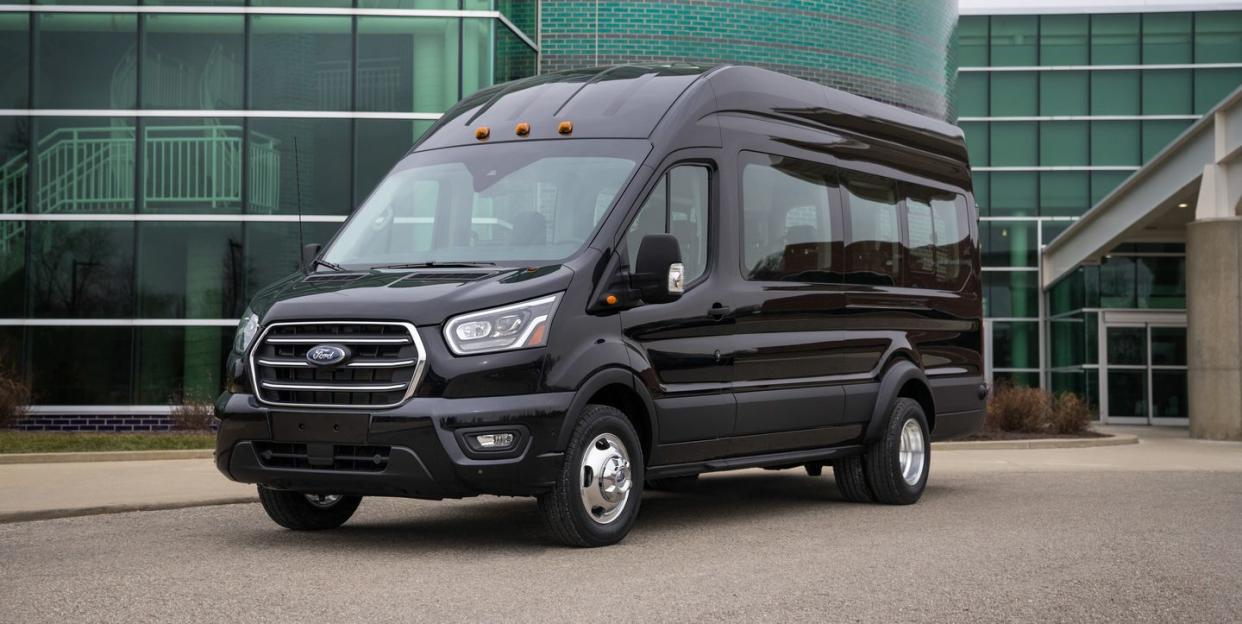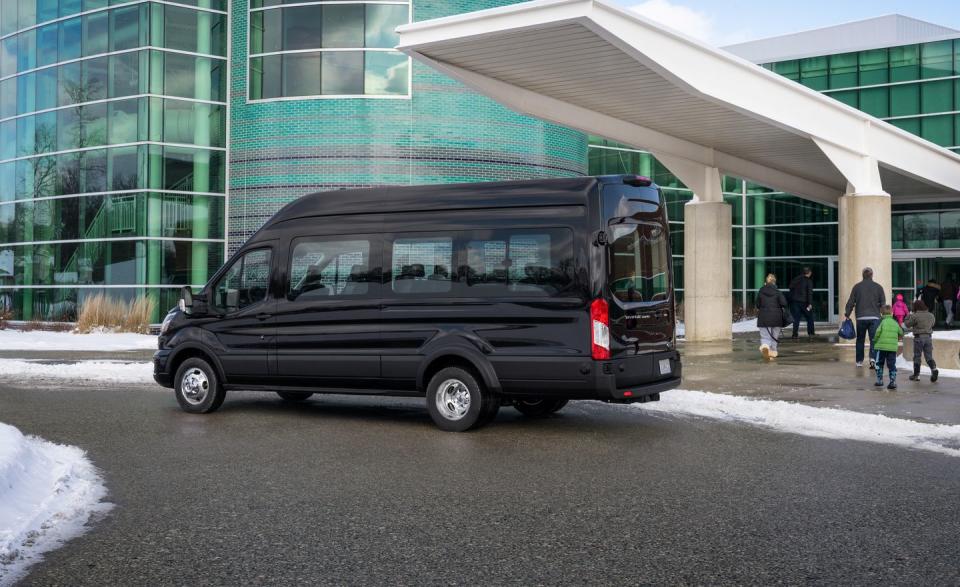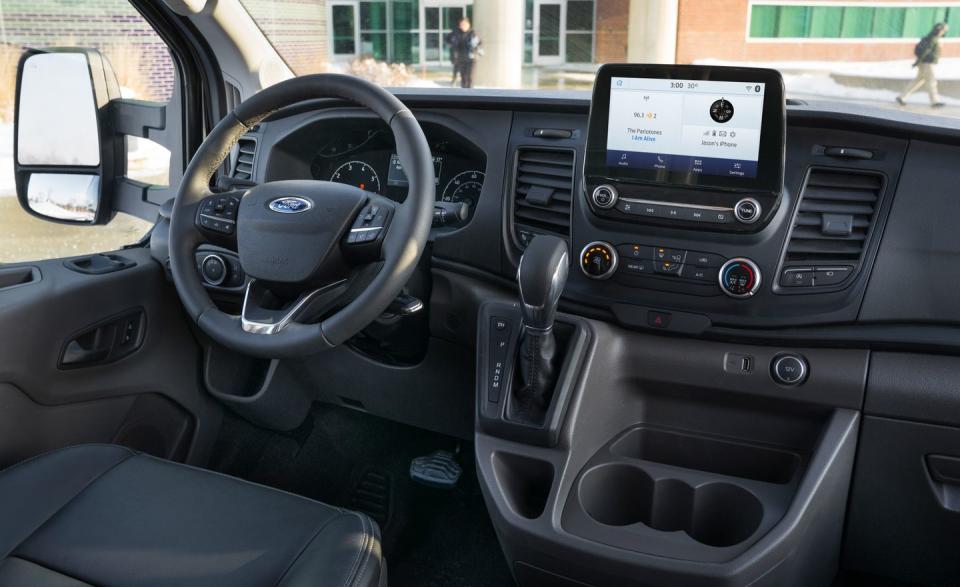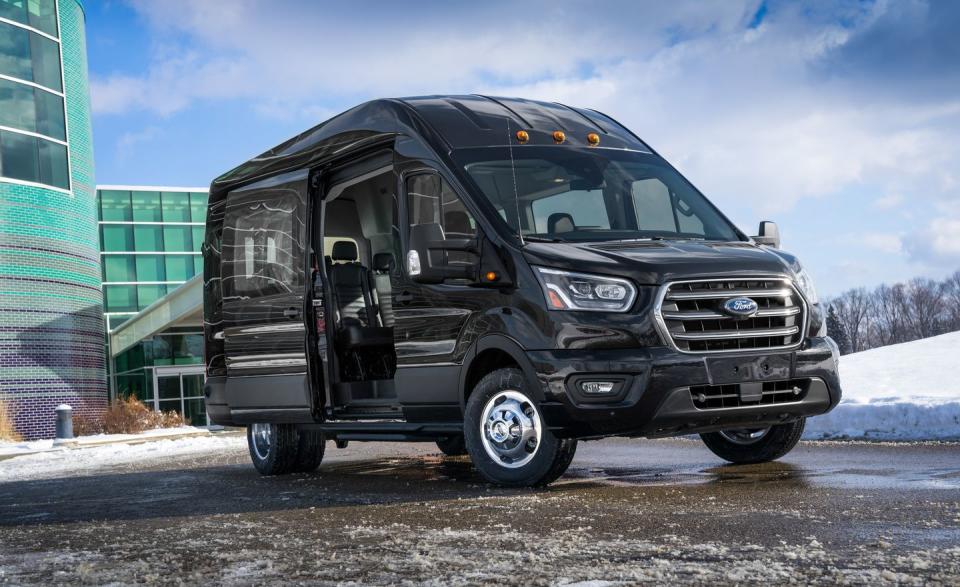The 2020 Ford Transit Van Brings AWD and New Engines to the Scene

Ford is refreshing its Transit passenger and cargo vans for the first time since this full-size van made its debut for the 2016 model year.
Updated diesel and V-6 engines arrive, promising more power and efficiency.
All-wheel drive is a new option.
In San Francisco, living expenses have soared to the point where people in high-paying tech jobs are known to consider moving into a van versus renting an apartment. No longer is the Bay Area's van culture a strictly fringe lifestyle for rebelling youth, not when average studio apartments rent for $30,000 a year and bakeries sell $21 egg sandwiches. Maybe some of them might enjoy the 2020 Ford Transit, just introduced with many modern conveniences. The Transit is already a city fixture, and among those who work, live, or do both in them, the van's dozens of space configurations, easy upfitting, and relatively low running costs have kept sales strong since Ford introduced the model in 2015. For 2020, Ford is refreshing the Transit cargo and passenger vans with new-to-it powertrains, improved safety, and higher-end options—regardless of how customers actually use them.

Of the current Transit’s three engine choices, just one—the twin-turbo 3.5-liter EcoBoost V-6 with 310 horsepower and 400 lb-ft of torque—remains onboard for 2020. The base 3.7-liter V-6 is out, replaced by a 3.5-liter V-6 with both port and direct injection. It's similar to the 3.3-liter V-6 in the F-150, which makes 290 horsepower and 265 lb-ft of torque. (Ford has not yet specified any output, fuel economy, payload, or towing figures, so bear with us.) Shoving aside the diesel inline-five, the 2020 Transit borrows the sequentially turbocharged 2.0-liter diesel inline-four from the overseas Ranger Raptor. Ford confirmed that the U.S. version produces the same 211 horsepower and 369 lb-ft, up from the five's 185 hp and 350 lb-ft. All engines pair with a 10-speed automatic transmission (goodbye six-speed) that offers a wider spread for improved fuel economy.

Although Europe received the option of all-wheel drive from the very start, the U.S.-market Transit didn't, but now it's available with the two gas engines. The U.S. version, which differs slightly from the Euro AWD, can send up to 100 percent of torque to the front axle, according to Ford. Unlike the Mercedes-Benz Sprinter 4x4—the only full-size van to offer all-wheel drive—the all-wheel-drive Transit maintains the same ride height as its rear-drive brethren. Ford claims the gross vehicle weight rating (the combined weight of the vehicle, occupants, and cargo) reaches 11,000 pounds if you order the stripped-down chassis-cab model, an increase of 640 pounds.
The exterior receives a hexagonal grille that bends at the center as opposed to creasing inward close to the bumper; the chromed bars have been reduced from six to three. An open-mesh grille is standard on EcoBoost models for improved cooling, while optional xenon headlights with LED running lamps are a welcome upgrade over halogens. A power-sliding door is available on both cargo and passenger models.

Inside, the Transit ditches the last-gen-Focus interior design, with myriad angled buttons and small displays, for a sleeker, more upright look that mirrors that of the 2020 Explorer. Most notable is the free-standing 8.0-inch touchscreen running the Sync 3 infotainment system atop a brand-new dashboard, which features an elegant (for a commercial van) array of stereo and climate controls. Apple CarPlay and Android Auto capability come standard, although we're curious how usable they are on the regular 4.0-inch non-touch display. A new 4.2-inch display in a revised instrument panel is also included. Forward automated emergency braking, pedestrian detection, lane-keeping assist, and automatic high-beams are now standard across every trim, while adaptive cruise control, blind-spot monitoring, and automatic parking are optional. Ford claims the grab handles and seat fabrics are more durable. The van culture may rejoice at the optional swiveling front seats. Ford says it listened to "recreational-vehicle customer requests," which means its engineers may very well have visited San Francisco.
Prices and more information will be available when the 2020 Transit goes on sale in the fall. We won't pity the software engineer making $200,000 a year who buys one, but among temporary shelters with standard Wi-Fi, there aren't many this well equipped.
You Might Also Like

